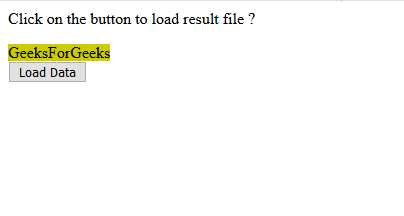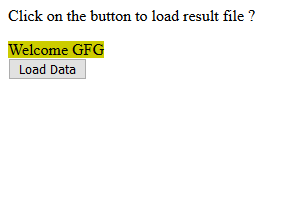jQuery | get() Method
Last Updated :
01 Mar, 2019
In jQuery .get() method loads data from the server by using the GET HTTP request. This method returns XMLHttpRequest object.
Syntax
$.get( url, [data], [callback], [type] )
Parameters
- url : String containing the URL at which request is to be sent
- data : This is an optional parameter that represents key/value pairs that will be sent to the server.
- callback: This optional parameter represents the function which is to be executed whenever the data is loaded successfully.
- type : This parameter represents type of data to be returned to the callback function i.e “xml”, “script”, “json”, “html”, “html”, “jsonp”, or “text”.
Example:
This PHP code is use to get data when below html program send the HTTP GET request.
<?php
if( $_REQUEST["name"] ) {
$name = $_REQUEST['name'];
echo "Welcome ". $name;
}
?>
|
This HTML code is use to send the HTTP GET request.
<html>
<head>
<script type="text/javascript"
src=
</script>
<script type="text/javascript"
language="javascript">
$(document).ready(function() {
$("#driver").click(function(event) {
$.get(
"result.php", {
name: "GFG"
},
function(data) {
$('#stage').html(data);
});
});
});
</script>
</head>
<body>
<p>Click on the button to load result file
</p>
<span id="stage"
style="background-color:#cc0;">
GeeksForGeeks
</span>
<div>
<input type="button"
id="driver"
value="Load Data" />
</div>
</body>
</html>
|
Output:
Before clicking on the button:

After clicking on the button:

Like Article
Suggest improvement
Share your thoughts in the comments
Please Login to comment...